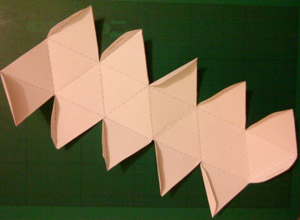Some weeks ago I randomly got into conversation with fellow final yr (online) student Susan Mortimer who, as mentioned in a previous post, puts together and hand makes the Mail Art One zine. Susan also makes one-off special edition books/catalogues showcasing work by solo artists. So I suggested that it would be really cool if we one day used my mirror card cut-outs as covers for special edition books featuring some of my work from the MA.
And lovely and kind as Susan is, she said why not?, let’s do it now (instead of some time in the future which is what I was thinking). Obviously I was going to jump at the chance and thought wow if she’s willing to try it then I am soo game and therefore I set about ordering specific double-sided mirror card for this mini project.

Black and white versions of special edition books - collaboration: Hand-cut covers by Sara Choudhrey and printing and binding by Susan Mortimer
The books are a mini showcase of some of the images from my experimentation through the MA project so far. I chose 10 images which I think some of the key visual elements of my work and added a few coloured samples to give some variation to the black and white theme. I think they work well together in the book and I asked Susan to arrange an order that she thought would suit them best (it’s hard to see your work objectively when you’ve been concentrating on it for so long). She did a great job.
I hand-cut a few of the sheets using pat7 (the pattern used for all aspects of the final piece) and arranged it so that the 10-point star would be in the middle of the front and the back.
I slightly altered the symmetry towards the spine too to make it fit appropriately. These sheets were then sent to Susan so she could test the binding and this morning I had the pleasure of receiving the proofs to look at.
I actually can’t decide which one I like best. We originally had the black one all black (even the middle section with the star in black too), but then this evening I thought I’d see how it looked with that cut out too and I quite liked it. And this is something I can do once Susan has finished the printing and binding on her side.
Susan has posted about her side of the process here: http://susanmort.wordpress.com/2010/06/26/u2-collaboration-with-sara/

Images of the books taken by Susan - capturing the shadows and reflections produced by the double-sided mirror card cut-out
We’ve just got a few more tweaks to do and then I’ll have around 20 of these special editions. I’m even contemplating having a couple on a plinth in the light room of the MADA (MA Digital Arts) exhibition space, but I’m going to leave this as an option if time permits rather than a must. Also, need to ask the others if there is space for it …
I now just need to get on with cutting the rest of the 20 covers! I may need a two-week long hand massage once I’m done.














Recent Comments